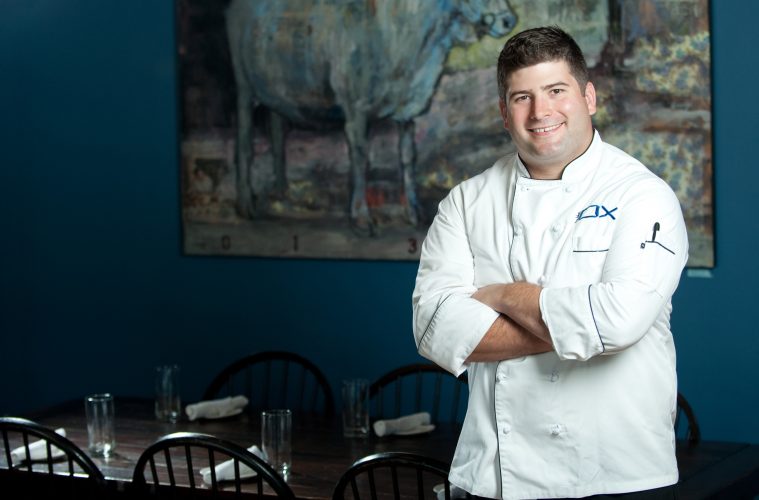Chances are good that you’ll be grilling up some hamburgers this fall season. To guide you along the path to burger perfection, Chef Matt O’Neil, owner of The Blue Ox in Lynn, serves up his tips for grilling the ultimate hamburger.
Cut of beef
The type of meat used is very important. Chef O’Neil says there’s no better option than using high-quality chuck beef. Chuck beef offers a great fat to meat ratio, something you want in order to keep your burgers juicy and delicious. You can blend cuts like sirloin or short rib into the mix to increase flavors and textures, but having a majority of the blend be chuck is important (80% of his burger is ground prime chuck). It keeps to tradition, is packed with flavor, and has the consistency to hold up to high heat on a grill, retain moisture, and keep its shape.
.jpg) |
Ratio of fat to beef
One of the biggest mistakes people make is going too lean on their beef mixture. Without fat, burgers become dry and dense, something nobody wants to eat. For optimum flavor and consistency, Chef O’Neil recommends using ground beef that’s 80% lean and 20% fat. Remember – a portion of the fat is going to cook out while you’re grilling so you need to make sure there’s enough in there to keep the patty tender and juicy. He recommends a range of not lower than 75% lean or higher than 85% – you want to be somewhere in the middle.
Freshness
Buying frozen burger patties from supermarkets and big box stores might seem convenient, but fresh is best. Whether you’re grilling for two, or groups of twenty, it’s worth putting in the effort to make your own burgers. He recommends you do your research to find a reputable and trustworthy butcher in your neighborhood that carries high quality properly aged meat, or at the very least, asking your supermarket butcher to grind your beef to order. When ordering, make your butcher aware of the cut(s) of beef that you want, their intended use, and your ideal meat to fat ratio.
Seasoning
Whether you’ve made your own burger patties or opt for the pre-made kind, seasoning is a must. If making the patties, season with plenty of salt and pepper as you go so the flavors are incorporated into the meat. Additionally, try adding an egg yolk or two to help bind the mixture, which also adds a richer flavor. Adding ingredients like finely chopped shallots or diced sweet onion are also a great option. Incorporating other ingredients into a burger mixture really depends on your flavor profile. Be creative, but don’t go overboard, you’ll end up masking the natural flavors.
Cooking
When making the burger patties, flatten them until they’re about ¾ inch thick for 8 oz. portions; slightly less for a 6 oz. portion. Prior to cooking – press your thumb into the middle of the patty to make a small indent, which will help keep the burger from puffing up during the cooking process. If possible, use a burger mold, which will help ensure even cooking throughout. Once you’ve made your patties, put them on a plate or pan lined with wax paper (do not stack), and place in the refrigerator to allow the meat and fats to come together; this will help the burger stay intact on the grill. Thirty minutes before cooking, remove the patties from the refrigerator and allow them to rise in temperature. Right before they go on the grill, season both sides of the burger patties with salt and pepper. He prefers to cook his burgers over a high heat until they’re medium rare, but doneness is a preference so if you don’t trust your own judgment, having a meat thermometer can be a helpful tool. Almost certainly – top with cheese and bacon and serve on a lightly toasted bun!

